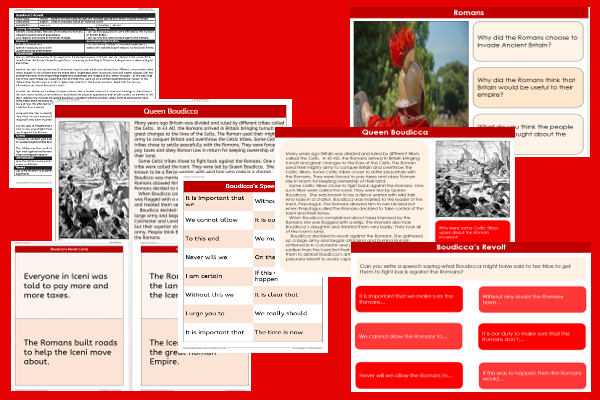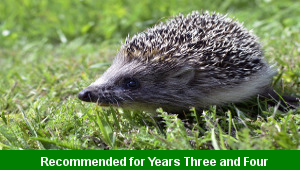Lesson Two – Boudicca’s Revolt

This history teaching pack for Key Stage Two gets the children to explore and illustrate how ancient Celtic tribes reacted and revolted against the Roman invasion of Britain in the past.
The class can practise composing and presenting a speech that might have been given by Boudicca as leader of the Iceni outlining reasons against the Roman invasion of Britain.
Download this teaching pack including a lesson plan, classroom activities and an interactive presentation to explore and illustrate how ancient Celtic tribes reacted and revolted against the Roman invasion of Britain in the past
Activities in this teaching pack include a shared reading text to describe how the Celts responded to the Roman invasion of Briton, a set of cards to identify and explain reasons as to why Boudicca revolted against the Romans and a vocabulary word bank to write a speech in character as Boudicca outlining reasons for the revolt against the Romans.
The interactive presentation can be used to explore how the Celts reacted and revolted against the Roman invasion of Britain in the past.
This lesson is part of a history scheme of work to get the children to explore and record what happened when the Romans settled in Ancient Britain and how it impacted the population and made changes to ways of life. There are teaching activities for shared learning, differentiated worksheets to support independent learning and interactive presentations to introduce concepts and key skills.
-

Rounding Hundreds
Explain and model how to round some different numbers to the nearest hundred based on the place values of the digits in each number
-

Rounding Tens
Identify and record how to round some different numbers to the nearest ten based on the place values of the digits in each number
-

Classic Animal Stories
Investigate the structure and content of classic works of fiction by significant authors with animals as the main characters
-

Cities, Towns and Villages
Research and present the history of a range of different buildings and people that are part of the local community using a school exhibition
